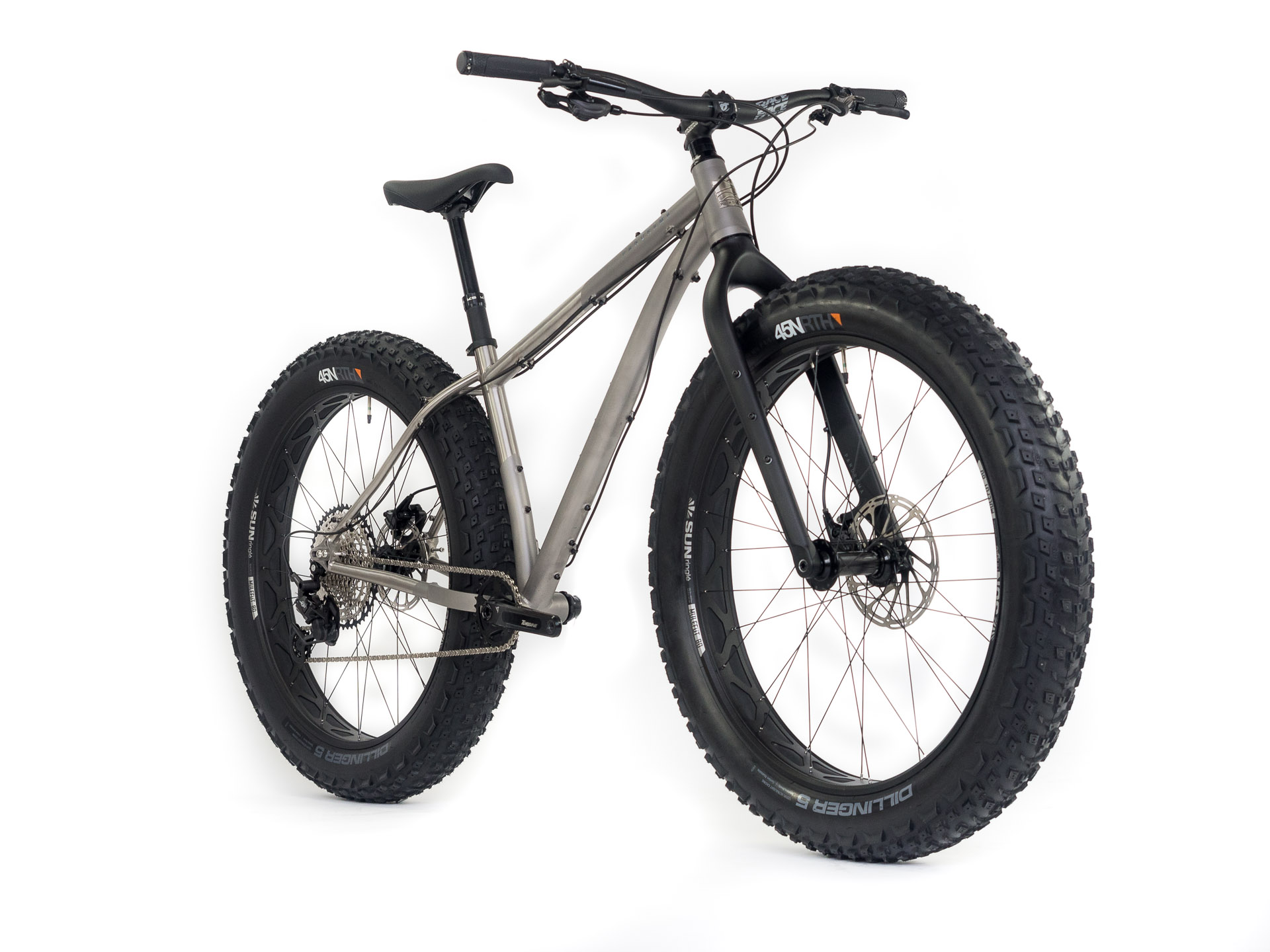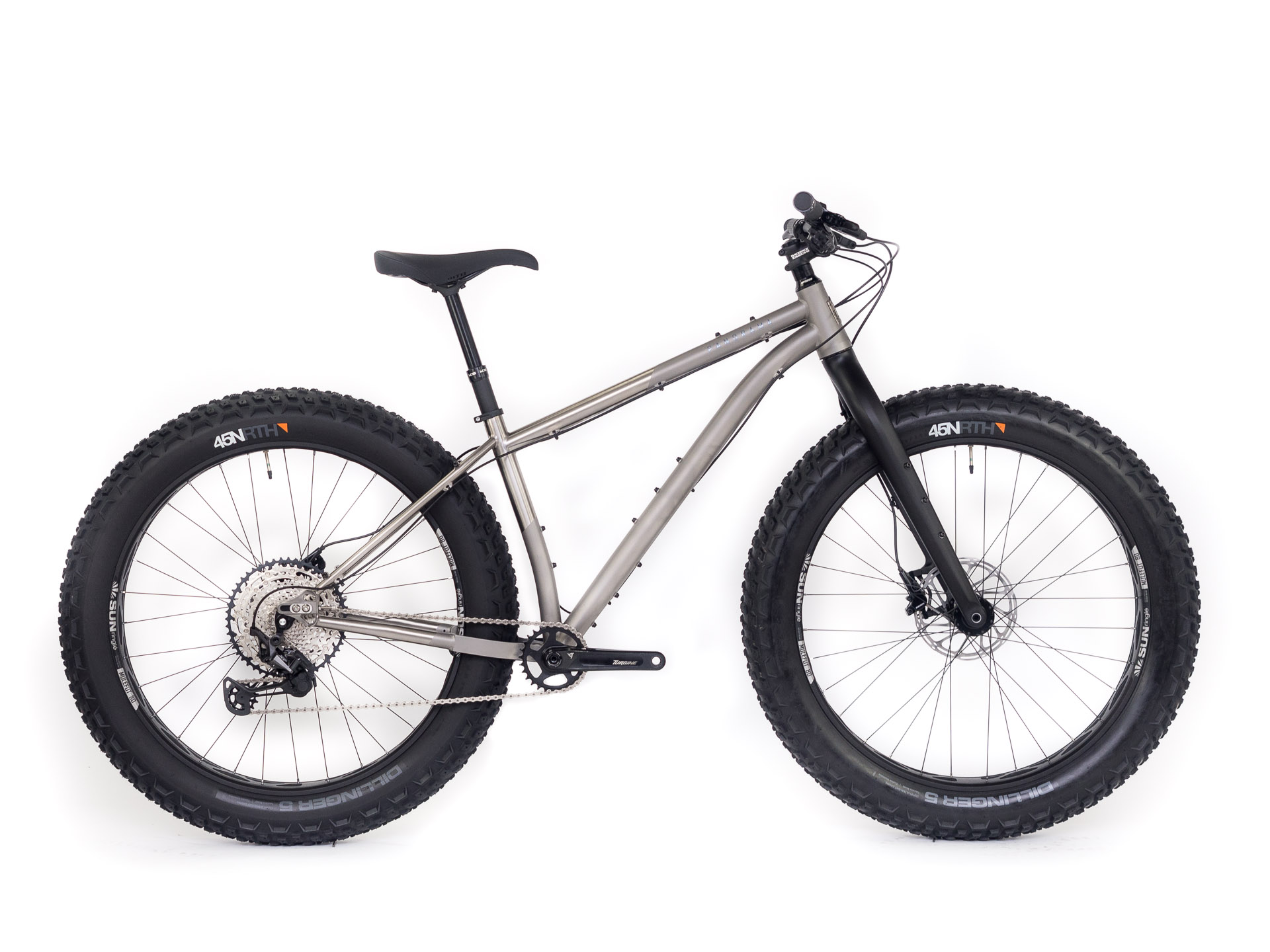A
Behind The DesignProduct creation is rarely (never!) a linear path that’s always well paved. Pitfalls, questioning and iterations are all part of the development process. This series of articles aims to highlight the thinking behind the design choices associated with our bikes, and to tell part of the story behind the birth of the models we offer today.
A
Focus : The Torngat Ti
A major challenge for many fatbike riders, especially in summer, is the higher Q-factor compared to other types of bikes.
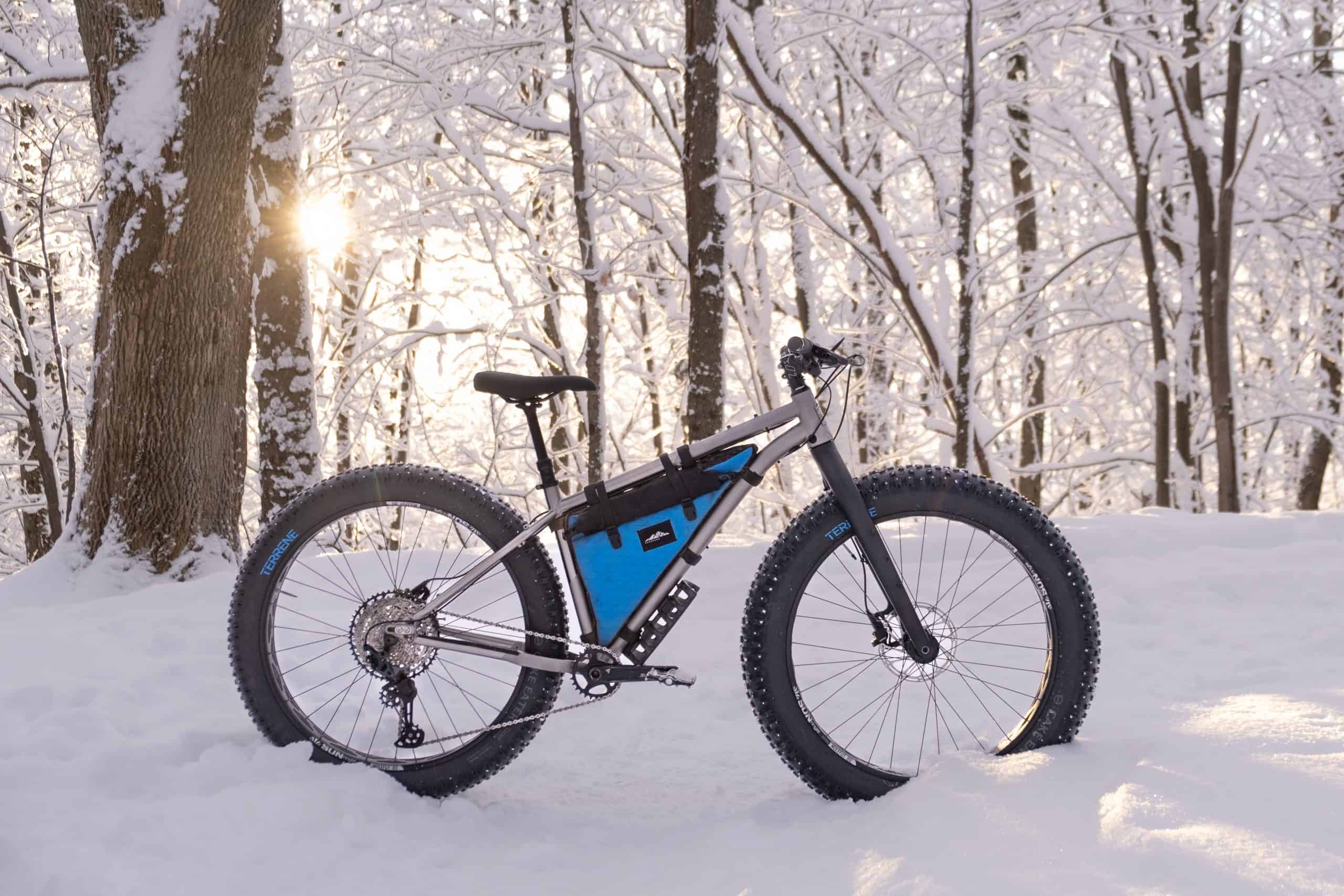
Fatbikes are part of Panorama Cycles’ identity. Our adventure began in 2015 with the Chic-Chocs model, marking the start of a journey focused on this category of bikes, recognized for their year-round usefulness. From the outset, we anticipated the need for versatility by introducing 29+ wheels for the summer season, offering a seasonal transformation.
However, a major challenge for many fatbike riders, especially in summer, is the higher Q-factor compared to other types of bikes. This Q-factor represents the distance between the pedals, dictating pedaling position. Because of their wider tires, fatbikes naturally have a higher Q-factor. The impact of this on comfort and joint pain can be particularly noticeable for some cyclists over long distances.

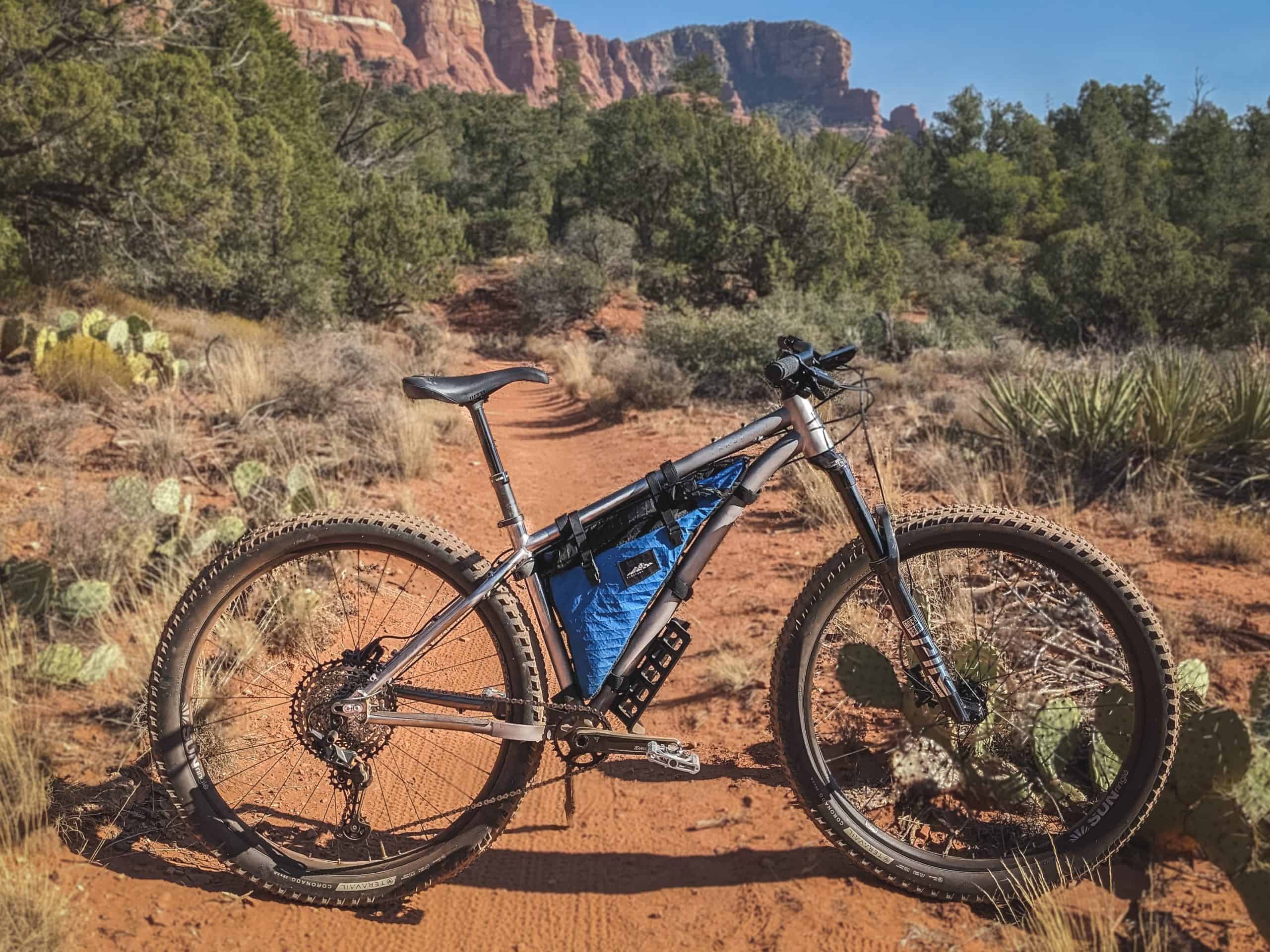
Our first model used 26×5″ tires with a 220mm Q-factor. With the move to 27.5×4.5 tires, we adopted BSA 100mm bottom brackets, reducing the Q-factor to 205mm. To put this into perspective, a gravel bike has a Q-factor of 151mm, and a mountain bike, 175mm. So, switching from a gravel bike to a fatbike requires more adaptation than that of a mountain biker.
It was against this backdrop that the Torngat Ti project took shape, with clear objectives: to accommodate 27.5×4.5″ tires for winter use, reduce the Q-factor for narrower fatbike tires (4in), and maintain a reduction for 29+ summer use.
Bottom brackets with a narrower q-factor, used in particular on downhill bikes equipped with the “superboost” standard and a BSA 83mm bottom bracket, have a q-factor of around 185mm. This results in an extra distance of just 5mm between each pedal and the bike’s centerline compared to a standard mountain bike, a potentially imperceptible variation for many cyclists. This is our starting point.
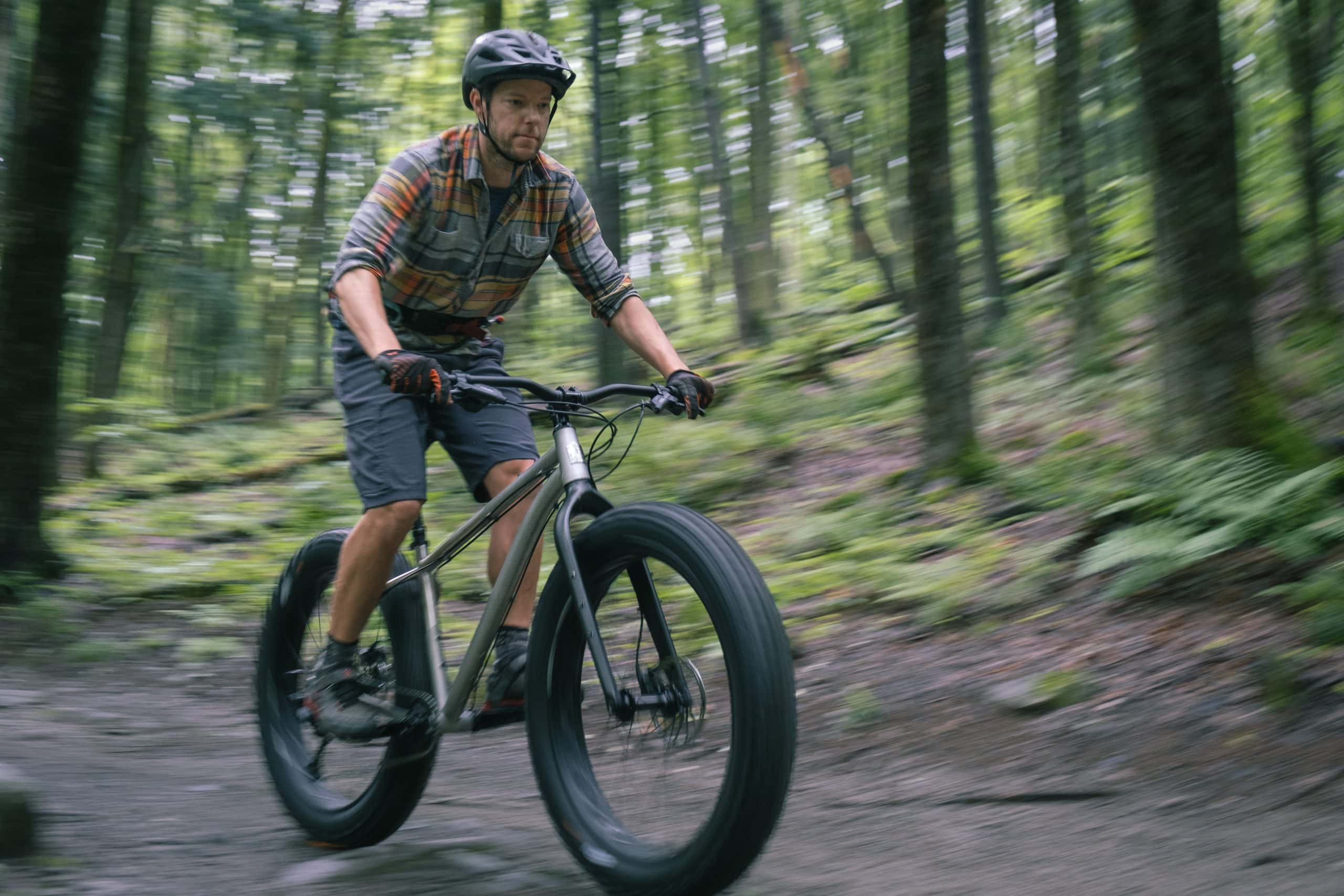
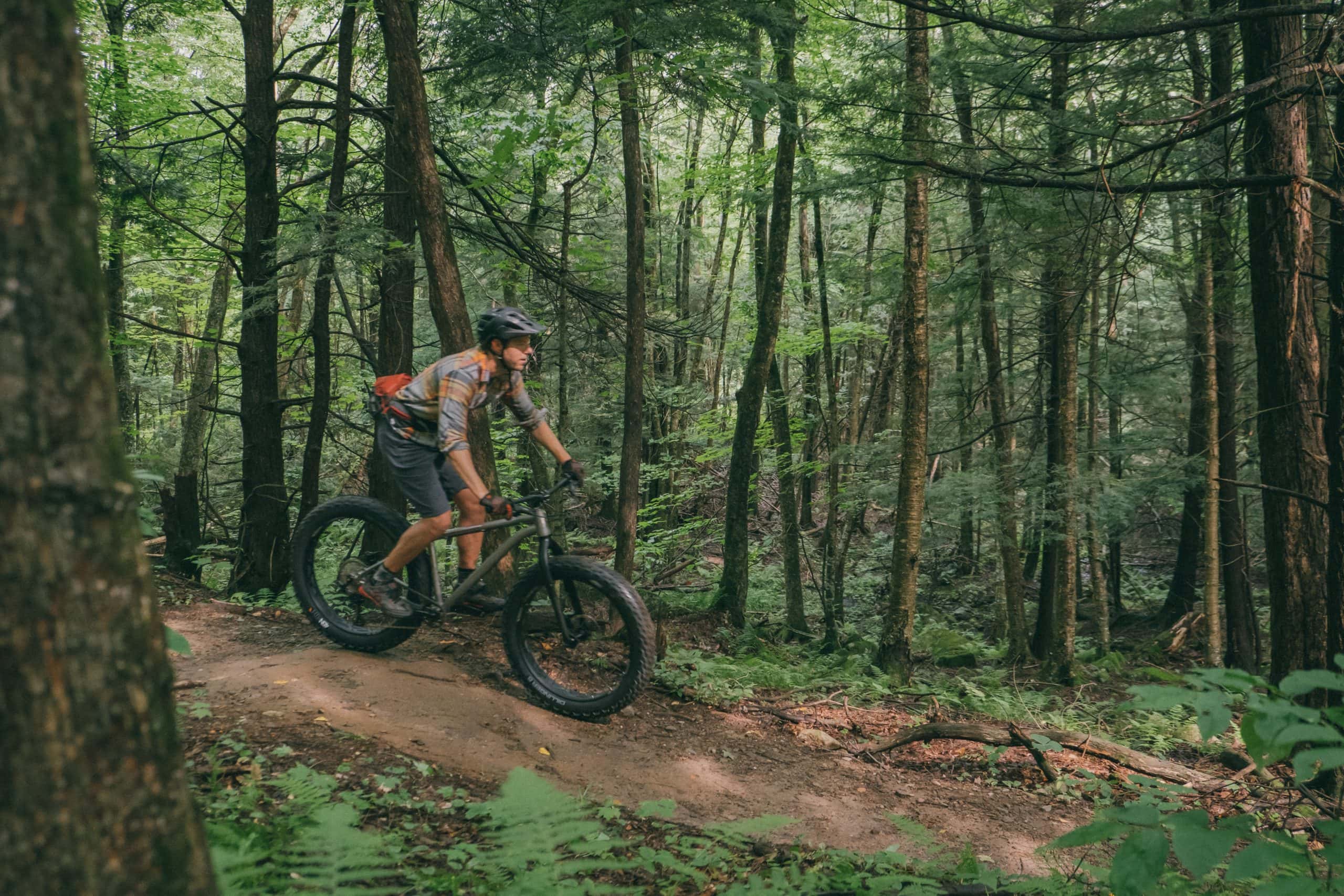
Once the choice of crankset has been made, the crucial question becomes the harmonious coordination of all elements such as tires, chainring, chain line, risk of heel contact against the frame, and the necessary clearances. The first step, which is decisive for us in the choice of material, is the design of the chainstays. The q-factor imposes constraints on the available spacing between the crankset arms. Considering that a 27.5×4.5 tire has to fit into this space, this limits the possible width of the chainstays. Initially, a carbon frame was envisaged. However, with the thickness the chainstays needed to be to accommodate the tire clearance, we knew that a steel plate or titanium design was going to be optimal.
Since it was necessary to use machined plates as chainstay transitions, the choice of bottom bracket standard was crucial. BSA 83mm, the classic standard for this type of bottom bracket, would have been an obvious choice due to its external bearings, parts availability and ease of maintenance. However, given the specific design of the chainstays, an 83mm wide shell wouldn’t give us the necessary tire clearance while maintaining an appropriate chainstay length (around 450mm). The decision was therefore taken in favor of a PF107 shell, a common standard on downhill bikes, with a width of 107mm.
Next, we note that with such a reduced Q-factor, the rear of the bike cannot adhere to the 197 mm rear wheel spacing standard. The reason for this is interference between the heels and chainstays as well as the seatstays during pedaling. This observation was made during the development of our second prototype, necessitating a complete redesign of the seatstays to avoid heel rubbing. As a result, the standard rear wheel spacing of 177 mm was adopted.
So far, we’ve discussed the challenges of designing a narrow 185mm q-factor. But why do we need to switch to a 205 mm configuration with a 27.5×4.5″ tire? Let’s talk about chain line and chain/tire clearance.
From the very first kilometers on the Baja Divide, the terrain was very rough. Every day, I hoped my equipment would survive.
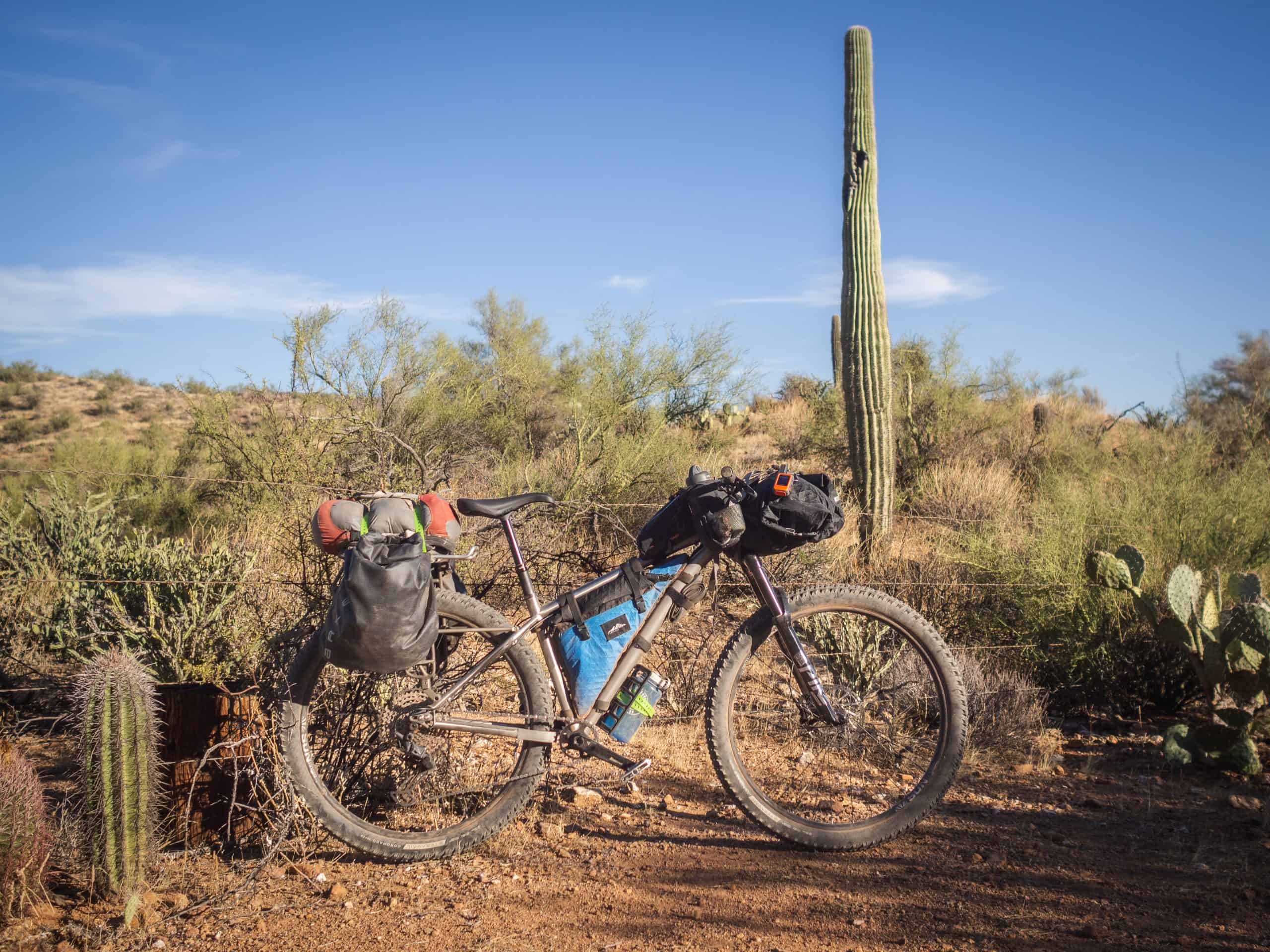
The nominal chain line is the distance between the center of a bike and the middle of the cassette. For a rear spacing of 177 mm, the nominal chain line is 66.5 mm. To accommodate different chainlines, some manufacturers, including Race Face, offer bottom brackets with different offsets, which are reversible. That said, with a 3 mm chainring offset in the reversed position, the chain line to the bottom bracket is 65 mm (for a 185 mm q-factor). At just 1.5 mm from the nominal chain line, this is a near-perfect chain line.
The main challenge with this configuration, and the reason why a longer bottom bracket axle is supplied, lies in the fact that the chain is likely to rub on the 27.5×4.5 tire when on the larger cassette sprocket. To remedy this situation and allow use of the wider tire, the longer axle shifts the chain line by 10 mm. By flipping the chainring 3 mm in this configuration, the resulting chain line is 69 mm, just 2.5 mm from the nominal chain line, ensuring optimal gear changes. In short, moving the chain line by 4 mm is all that’s needed to avoid contact between chain and tire when using granny gear.
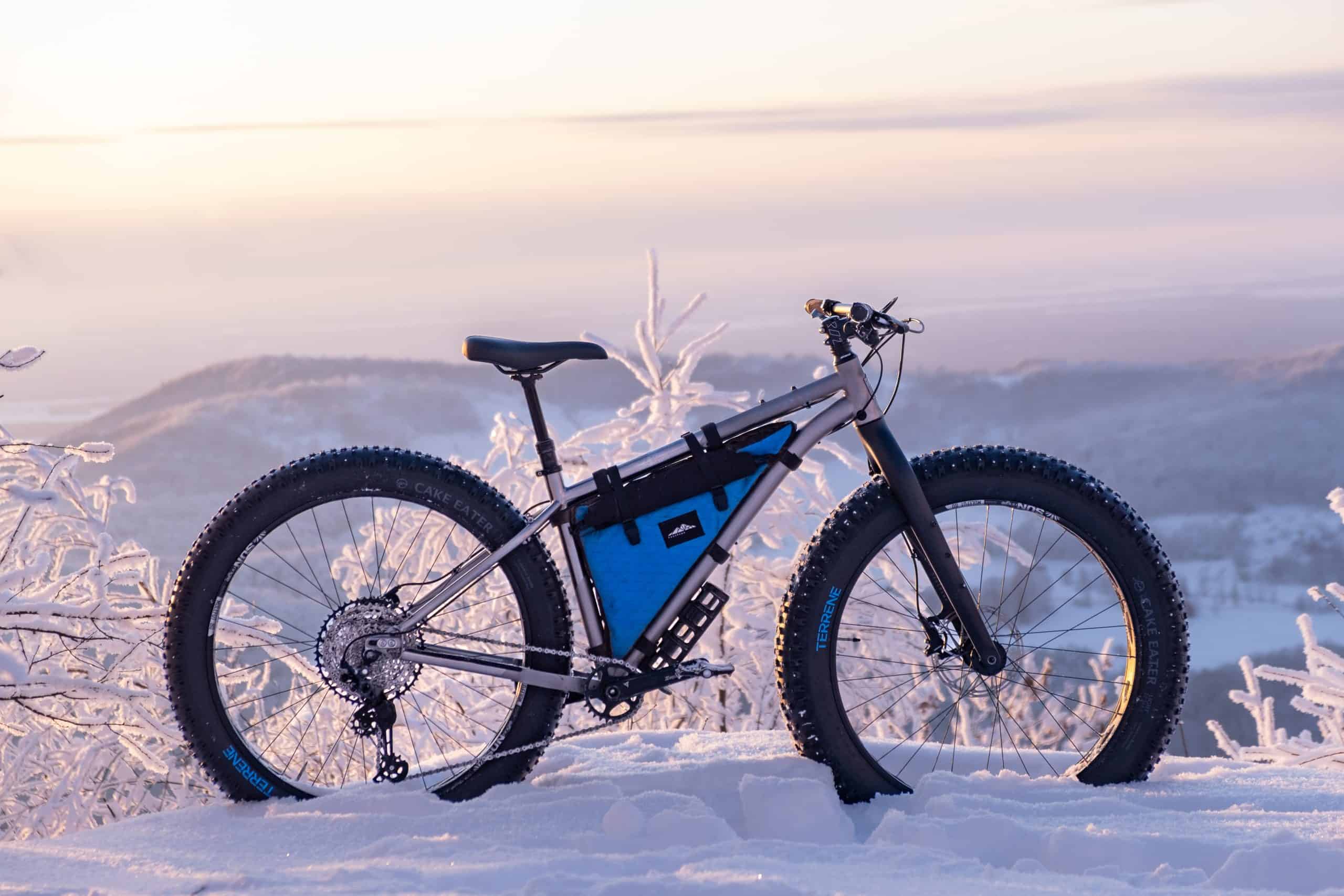

Finally, the distance between chain and tire is influenced by the length of the chainstay. A shorter chainstay increases clearance. This is why we make recommendations on the position of the rear wheel according to the tire size and bottom bracket axle chosen.
Thank you for taking the time to read about the thought process that went into making this unique bike. We hope you’ve gained a better understanding of its versatility and why we believe the Torngat Ti is an outstanding all-round/all-season bike. Any questions? Write to us at info@panoramacycles.com and we’ll be happy to help.
See you out there!
Simon (Engineer / Owner of Panorama Cycles)

